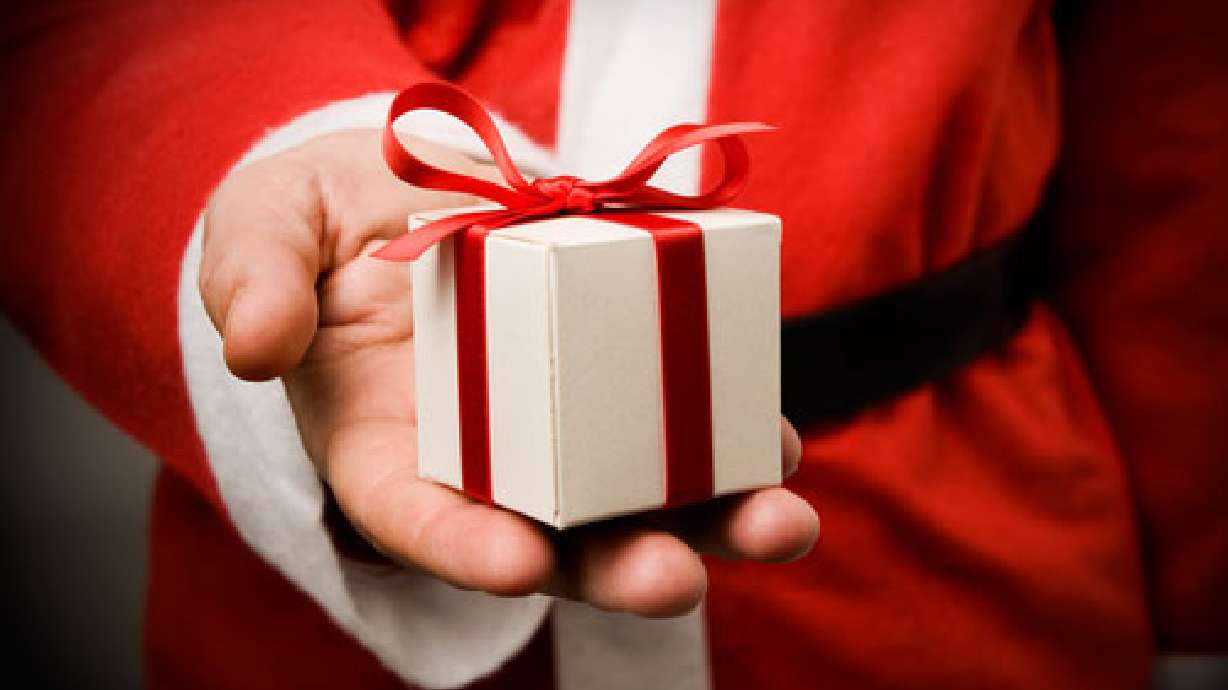Estimated read time: 3-4 minutes
This archived news story is available only for your personal, non-commercial use. Information in the story may be outdated or superseded by additional information. Reading or replaying the story in its archived form does not constitute a republication of the story.
NORTH POLE — There are roughly 2 billion children in this world, many of them naughty and many nice. And given the season, the nice ones ought to be getting present on Dec. 25. At least, if you believe in Santa. Like you should. Because of science.
You might think delivering those gifts in a flying sleigh is a job too big for any person, even Santa, and therefore may choose to view Mr. Claus as merely a figment of the collective human imagination. But you'd be wrong.
Way back in 1997, the details were worked out by Santa science expert and aerospace engineer Larry Silverberg and his students at North Carolina State University. And those details involve some bending of space, time and your mind.
Assume there are about 200 million children that will be getting presents this Christmas, and roughly 75 million homes to visit. That works out to about 122 million miles of flight for Santa on Christmas Eve. Do the math, and that's a blur of red, white and brown travelling at roughly 5,083,000 miles per hour throughout the evening. It's a speed almost 20 percent of the speed of light.
Related:
Achieving that kind of speed is not in-itself impossible, since there are things in the universe that move that fast, or close, which are much more massive than Kris Kringle, including an entire star that zips through the universe at 3 million miles per hour.
Of course, there are a number of problems, including the fact that Rudolf and all the rest of the reindeer would burn up due to the friction caused by the atmosphere. So how does Santa pull of this incredible feat, you skeptically ask?
Well, keep in mind that Santa's had about 400 more years of experience with relativistic physics than we do, so it's difficult to convey, but the short answer is "relativity clouds."
"Relativity clouds are controllable domains (volumes) within which space-time is controlled. An observer inside a relativity cloud perceives time, space and light differently than an observer outside the relativity cloud," states a report from Silverberg, et. al.
Basically, this gives him the ability to take months in order to deliver the presents from his own perspective, as opposed to the observer perspective, which lasts mere minutes. Inside the cloud he doesn't need anything more advanced than a jet-pack wielding reindeer in order to move around.
Relativity clouds are controllable domains (volumes) within which space-time is controlled. An observer inside a relativity cloud perceives time, space and light differently than an observer outside the relativity cloud.
–report on Santa's travels
Of course these numbers are based on the population of children in 1997, and there are frankly quite a lot more now. But with the help of a relativity cloud, all he needs are a few more months of bent space-time. It all looks the same to the children who really believe.
Should the sleigh with the relativity cloud generator break down, there are several other backup options available to Jolly Old St. Nick. He could use non-relativistic travel combined with an ion shield, according to astrophysicist Knut Jorgen Roed Oedegaard. Also, he's got access to all 11 dimensions theorized by M-theory, which is an advanced string-based particle physics that Santa also happened to prove was true in a paper in 1834.
He also has a warp drive similar to the one that NASA scientists recently theorized was possible, which allows him to travel at ten times the speed of light. The warp drive does not appear to be ready quite yet, but if you're still doubtful of Santa's ability to do all this, then perhaps you'd be convinced by the fact that NASA got the idea from Santa last year. For Christmas. It had a bow on it and everything.










